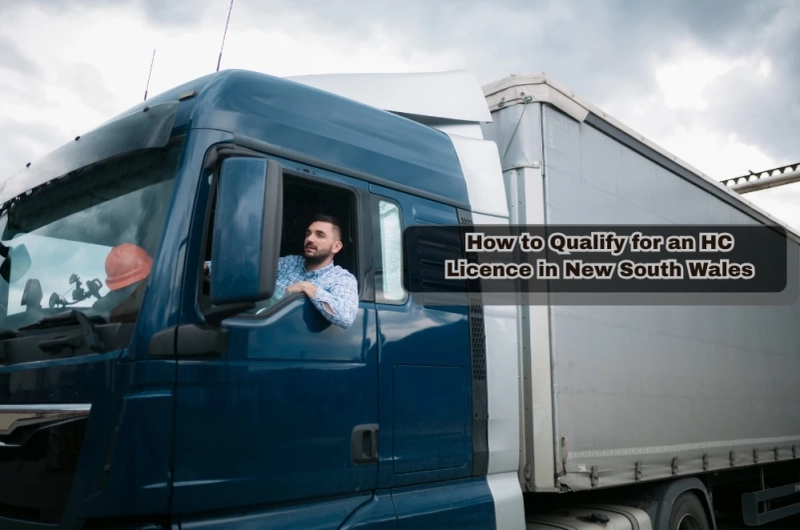Gearing up for a career on the open road in New South Wales? If you’ve been considering getting your Heavy Combination (HC) licence, you’re in good company. It’s a move that opens up genuine opportunities—not just in trucking but across the booming logistics sector Australia-wide. As someone who’s helped mates and colleagues navigate this process (and gone through it myself), I know how confusing the system can look from the outside. Let’s break down exactly how to qualify, what you need to know, and why it pays to get it right the first time.
But first, if you’re ready to hit the ground running, you’ll want to check out a proper HC licence course for hands-on, accredited training.
What is an HC licence, and who needs it?
An HC licence (Heavy Combination) allows you to drive heavy vehicles, typically trucks with a prime mover and one semi-trailer or a rigid vehicle towing a trailer with a gross vehicle mass over 9 tonnes. This is the step up from a Heavy Rigid (HR) licence and opens doors to more complex and lucrative driving gigs. If you want to haul freight across states, work in large-scale construction logistics, or join the mining sector’s transport fleets, this licence is often a must-have.
Here’s who usually needs an HC licence:
- Experienced HR drivers looking to upgrade their career
- Those aiming for interstate or long-haul trucking jobs
- Workers in mining, construction, or large-scale delivery
- Small business owners expanding their logistics operation
When I decided to upgrade from HR to HC, it wasn’t just about bigger trucks; it was about earning potential and job flexibility. Employers in New South Wales are always searching for qualified HC drivers, and with supply chain pressures, the need is only growing.
Entry requirements and eligibility
Before you book any test or training, you need to make sure you tick the right boxes. In NSW, eligibility for an HC licence is set by strict regulations—no shortcuts, no skipping steps.
You must:
- Hold an Australian driver’s licence (Class MR or HR) for at least 12 months
- Be medically fit to drive heavy vehicles (you’ll likely need a medical check)
- Be a permanent resident of NSW or hold appropriate working rights
- Pass the Heavy Vehicle Knowledge Test at a Service NSW Centre
The truck licence requirements are clearly laid out by Service NSW. It’s worth reading them carefully so you don’t waste time (or money) on avoidable mistakes.
In my own experience, the medical check can trip people up—make sure your eyesight, blood pressure, and overall health are up to scratch before you even think about booking. I’ve seen more than one would-be driver knocked back because they missed this detail.
Step-by-step: The HC licence process in NSW
No two journeys are exactly alike, but here’s a typical roadmap for getting your HC licence:
Check your eligibility.
Don’t skip this! The last thing you want is to pay for a course or test and find out you don’t qualify.
Prepare for the Knowledge Test.
Study up on the road rules and safe driving practices for heavy vehicles—there are online guides and practice quizzes.
Book and pass the Knowledge Test.
Do this at a Service NSW centre. Bring your ID and proof of your current licence.
Complete an accredited HC licence course.
Enrol with a registered provider—look for trainers with modern vehicles and great student reviews.
Undertake practical driving assessment.
After training, you’ll need to demonstrate your skills in a real truck. This includes reversing, coupling/uncoupling trailers, and safe on-road behaviour.
Apply for your upgraded licence.
Once you pass, head back to Service NSW with your paperwork.
Quick checklist for your HC licence journey:
- Proof of identity and NSW residency
- Up-to-date medical certificate
- Completed logbook (if required)
- A course certificate from a registered training organisation
If you want a deeper look at the nitty-gritty of the heavy vehicle licence process, keep an eye out for detailed internal guides and first-hand stories.
Training: Why the right course matters
Here’s where the rubber really hits the road. Not all training is created equal, and your choice of HC licence course can make or break your confidence on test day. When I went through my course, what stuck out was the difference between a provider who simply “ticked the boxes” and one who genuinely prepped us for real-world driving. Don’t just chase the cheapest option—look for:
- Modern, well-maintained trucks (the closer to your future job, the better)
- Trainers with industry experience, not just teaching quals
- Realistic practice scenarios (tight corners, city traffic, highway runs)
- Flexible scheduling for people working full-time
A good course not only helps you pass the test but gives you the groundwork for safe, confident solo driving.

What happens after you get your HC licence?
It’s easy to think the hard work’s done once you’ve got the plastic in your wallet. In truth, this is where the adventure begins. Many drivers use their HC licence as a springboard into even bigger roles—from B-double and road train driving to fleet management. You’ll also need to stay on top of compliance, safety upgrades, and industry news.
Popular next steps:
- Pursue interstate driving jobs
- Consider further upgrades (MC licence for multi-combination vehicles)
- Network with local logistics companies
- Take ongoing safety and refresher courses
Are you curious about how obtaining an HC licence can open up exciting career opportunities in the trucking industry and lead to rewarding, well-paying positions across Australia?
Common mistakes (and how to dodge them)
Let’s get real: plenty of would-be truckies stumble over the same hurdles. Here’s what I’ve learned—and seen—over the years:
- Not reading eligibility rules closely enough. Always double-check Service NSW requirements.
- Rushing the training. Quality trumps speed—take the time to master skills.
- Underestimating the medical. Get checked out early, especially if you have a health condition.
- Neglecting paperwork. Keep every certificate and receipt—you’ll need them all.
If you trip up, don’t be afraid to ask for help. The industry’s built on people sharing advice—just like this guide.
Final thoughts: Making your move
Though it calls for meticulousness, thorough preparation, and the right mindset, qualifying for an HC licence in New South Wales isn't rocket science. The HC route is open to you if you are prepared to put in the effort, whether you are a young employee considering a new trade or a seasoned HR driver seeking to change up a gear.
If you are serious about starting your journey, start with an adequate HC licence course, study up on truck licence criteria, and draw knowledge from individuals who have travelled the road before you.
Need an insider's tip or have any questions? Leave a comment or see more thorough articles; always another driver waiting to assist you get going.


